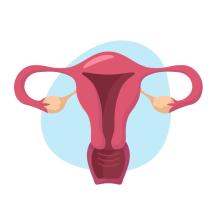Recent Publications

Naim Shehadeh: Unmet Needs in the Treatment of Childhood Type 2 Diabetes: A Narrative Review (Adv Ther .)
Type 2 diabetes (T2D) in youth is a global health concern characterized by an increasing incidence and prevalence, especially among disadvantaged socioeconomic subgroups. Moreover, youth-onset T2D is more aggressive and causes earlier, more severe long-term cardio-renal complications compared with T2D in adults. The therapeutic options available are limited and often inadequate, partially due to the numerous challenges in implementing clinical trials for this vulnerable patient population. Over the last few years, a significant effort has been made to develop new effective drugs for children and adolescents with T2D. Specifically, a number of studies are currently generating new data to address the urgent unmet medical need for optimal management of this disease. This review describes the central features of youth-onset T2D and summarizes the available treatments and ongoing studies in pediatric patients.

Boris Fichtman, Amnon Harel: A single filament biomechanical study of the enteropathogenic Escherichia coli Type III secretion system reveals a high elastic aspect ratio (Nanoscale . )
Type III secretion systems (T3SSs) are syringe-like protein complexes used by some of the most harmful bacterial pathogens to infect host cells. While the T3SS filament, a long hollow conduit that bridges between bacteria and host cells, has been characterized structurally, very little is known about its physical properties. These filaments should endure shear and normal stresses imposed by the viscous mucosal flow during infection within the intestinal tract. We used atomic force microscopy (AFM) to probe the longitudinal and radial mechanical response of individual T3SS filaments by pulling on filaments extending directly from bacterial surfaces and later pressing into filaments that were detached from the bacteria. The measured longitudinal elastic moduli were higher by about two orders of magnitude than the radial elastic moduli. These proportions are commensurate with the role of the T3SS filament, which requires horizontal flexibility while maintaining its structural integrity to withstand intense stresses during infection.
Elon Glassberg: Low-titer group O whole blood in military ground ambulances: Lessons from the Israel Defense Forces initial experience (Transfus Med . )
Cold-stored low-titer group O whole blood (LTOWB) has become increasingly utilised in both prehospital and in-hospital settings for resuscitation of traumatic haemorrhage. However, implementing the use of LTOWB to ground medical teams has been limited due to logistic challenges.
Methods: In 2022, the Israel Defense Forces (IDF) started using LTOWB in ambulances for the first time in Israel. This report details the initial experience of this rollout and presents a case-series of the first patients treated with LTOWB.
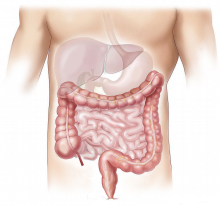
Amir Mari: Colonoscopy in the young: Rethinking the yield (J Investig Med . )
Colonoscopy is, indeed, a powerful diagnostic procedure, allowing direct visualization and sampling of the colonic and terminal ileal mucosa. Moreover, it has an excellent safety profile and—with the addition of sedation—is very well tolerated by patients. Not surprisingly, the demand for and the volume of colonoscopies is rising worldwide. Yet, as with any invasive procedure, an appropriate indication should be guaranteed before performing a colonoscopy. Major gastroenterology societies have issued guidelines on what are considered appropriate indications for colonoscopy, mainly for colorectal cancer (CRC) screening policies. Guidelines from the American society of gastrointestinal endoscopy (ASGE)1 on the appropriate use of endoscopy state that colonoscopy is “generally indicated” for the evaluation of “unexplained hematochezia” without referring to age or to the presence of anorectal pathology. The guidelines recommended against performing colonoscopy for chronic stable abdominal pain.
Unfortunately, little data or guidance have been published concerning the appropriate use of colonoscopy in the young (<50 years of age).
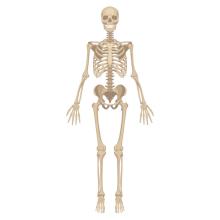
Alexander Lerner, David Rothem: Treatment of Bifocal Periprosthetic Fractures above and below a Knee after Tumor using Spanning Ilizarov Device: A Case Report (J Orthop Case Rep .)
Multiple treatment options and internal and external devices have been recommended for periprosthetic fractures management around total knee arthroplasty.

Gassan Moady, Elias Daud, Shaul Atar: The impact of on-site cardiac surgical backup on clinical outcomes of acute coronary syndrome-analysis of the ACSIS national registry (Front Cardiovasc Med .)
The availability of advanced technologies for mechanical support in hospitals with on-site cardiac surgery (CS), along with the ability to perform urgent coronary artery bypass graft (CABG) surgery, may result in improved clinical outcomes in patients with acute coronary syndrome (ACS).
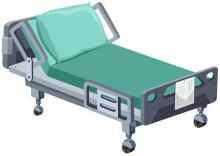
Shelley Cohn: Perioperative Morbidity and Long-term Outcomes of Bariatric Surgery in Patients with Severe Obesity (Isr Med Assoc J . )
Long-term outcome data for bariatric surgery in patients with severe obesity (SO) (body mass index [BMI] 50 kg/m2) are scarce. Objectives: To compare perioperative morbidity and long-term outcomes between patients with SO and non-SO (NSO).

Maya Frank Wolf, Ronen Sloma, Luiza Akria, Michal Carmiel Haggai, Lior Lowenstein: Azathioprine and 6-mercaptopurine-induced intrahepatic cholestasis of pregnancy: Case report and review of the literature (Taiwan J Obstet Gynecol . )
Azathioprine, a prodrug of 6-mercaptopurine (6-MP), is used in the treatment of inflammatory bowel disease and may be continued during pregnancy. Acute cholestatic liver injury has been reported to occur with azathioprine. We aimed to examine azathioprine related cholestasis effect on pregnancy complications and outcome.
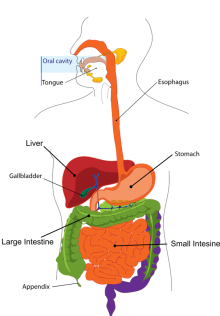
Alper Adir, Andrei Braester, Perelstein Natalia, Dally Najib, Luiza Akria, Celia Suriu, Barhoum Masad, Waksman Igor: The role of blood inflammatory markers in the preoperative diagnosis of acute appendicitis (Int J Lab Hematol .)
Acute appendicitis (AA) requires a prompt diagnosis. According to postoperative pathological results, a significant number of appendectomies are performed on a normal appendix (NA). The aim of this study is to evaluate the role of preoperative inflammatory markers in supporting and improving the clinical diagnosis of AA, extracting more information from CBC parameters.
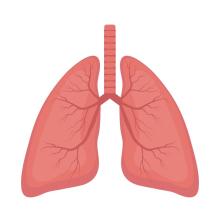
Khalaf Kridin, Erez Onn: A history of asthma is associated with susceptibility to hidradenitis suppurativa: a population-based longitudinal study (Arch Dermatol Res . )
The association of hidradenitis suppurativa (HS) and asthma remains to be investigated. To assess the bidirectional association between HS and asthma. A population-based study was conducted to compare HS patients (n = 6779) with age-, sex-, and ethnicity-matched control subjects (n = 33,259) with regard to the incidence of new onset and the prevalence of preexisting asthma.

Michael Edelstein: Long COVID in low-income and middle-income countries: the hidden public health crisis (Lancet . )
Comment
The COVID-19 pandemic exposed crucial fault lines in society both within and between different societies. Over the past 3 years, inequity has been highlighted in several areas including research capacity, surveillance, and availability of COVID-19 therapeutics and vaccines. These disparities are particularly pronounced when comparing high-income countries (HICs) and low-income and middle-income countries (LMICs). Wide disparities also exist between countries with respect to research and coordinated national responses towards the long-term effects of COVID-19, often referred to as long COVID or post-COVID-19 condition....
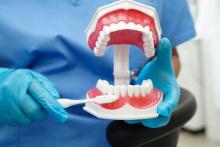
Jawad Abed, Iris Slutzky-Goldberg: The consequences of orthodontic extrusion on previously intruded permanent incisors-A retrospective study (Dent Traumatol .)
The aim of this study is to compare the adverse effects that occur after orthodontic extrusion of teeth that have been traumatically intruded with those of similar teeth that have not experienced any trauma.

Amir Mari, Vincenzo Savarino: Encouraging appropriate use of proton pump inhibitors: existing initiatives and proposals for the future (Expert Rev Clin Pharmacol . )
Proton pump inhibitors (PPIs) have revolutionized the management of acid-related disorders, representing today the mainstay treatment of these conditions. However, despite their large range of indications and usefulness, the remarkable expansion of their use in the last two decades cannot be explained by the increasing prevalence of acid-related diseases only. An inappropriate prescription for clinical conditions in which the pathogenetic role of acid has not been documented has been described, with the natural consequence of increasing the costs and the potential risk of iatrogenic harm due to adverse events and complications recently emerged.



